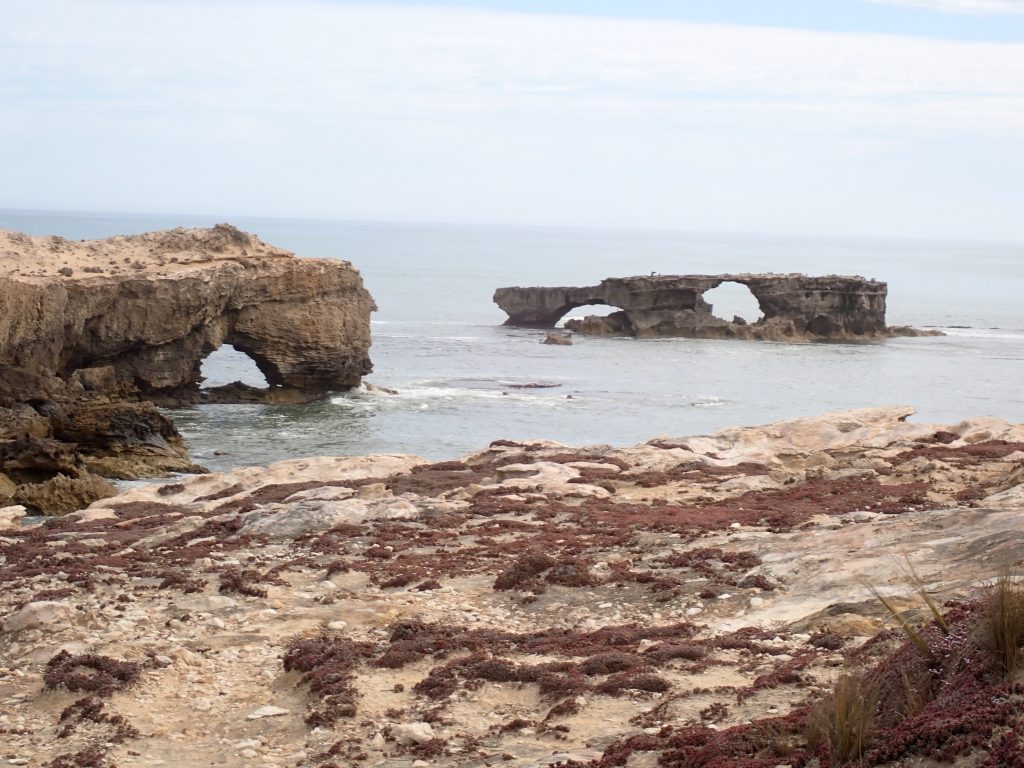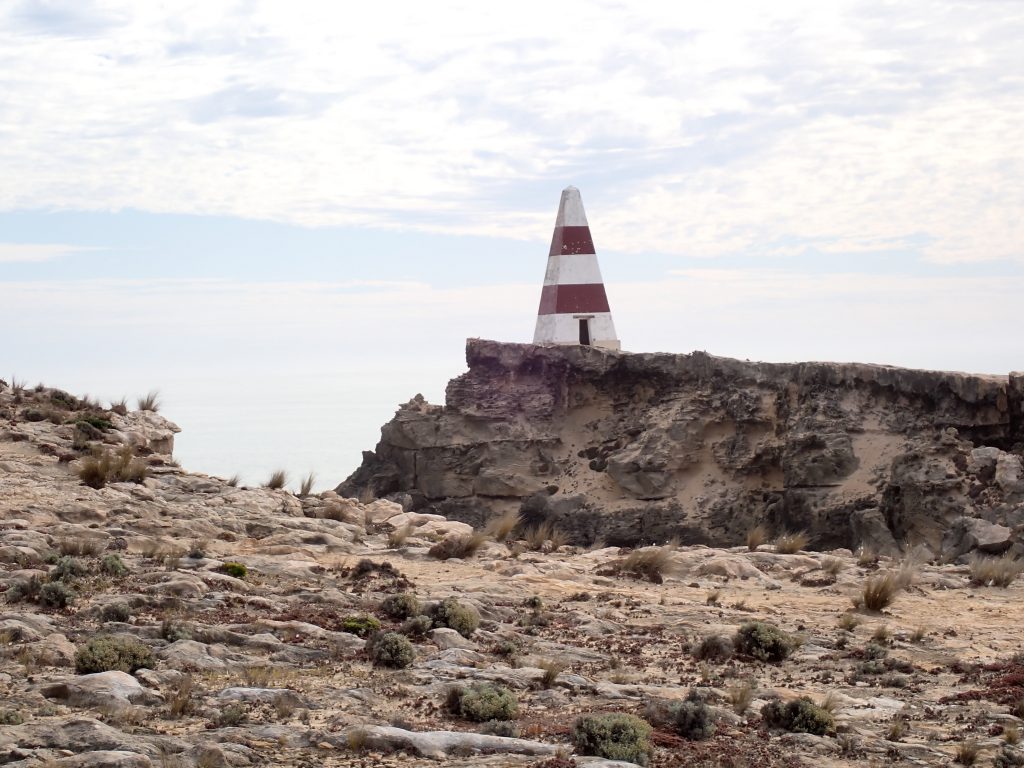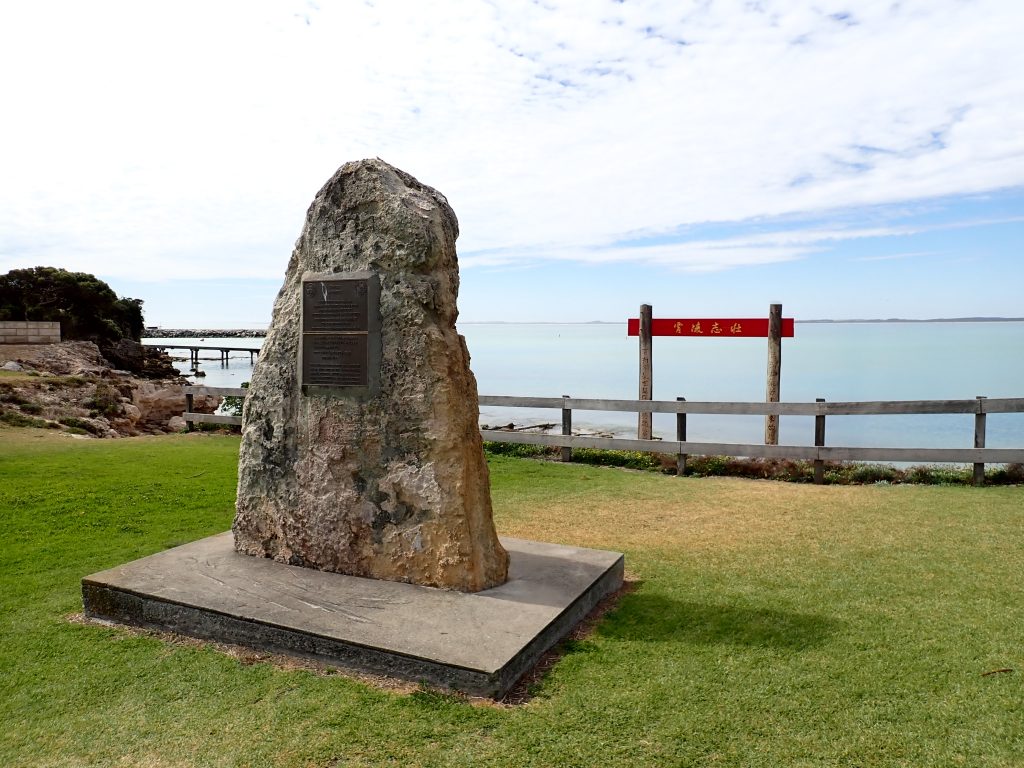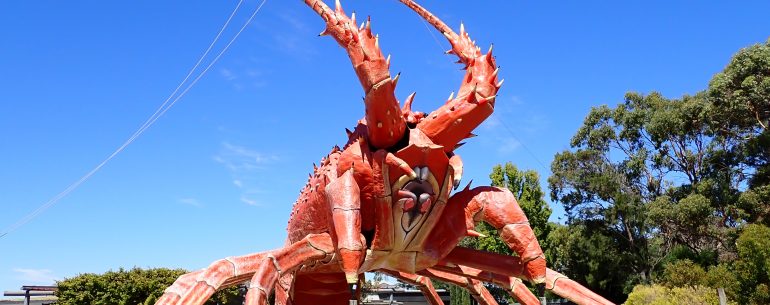Our first full day in the campervan today and we overslept! Check-out times on campsites are apparently 10am and can in some places be rigidly enforced. Luckily at Mount Barker it wasn’t as we didn’t leave until about 10.45! From there we headed initially east and then turned off the A1 onto the B1 – Princes Highway. This long, straight road took us along parallel to the coast past vast salt lakes bounded on the coastal side by extensive sand dunes. This carried on for miles and miles and miles and …. Very impressive.
After a few hours driving we came into the Coonawarra region. This is said to be the Aboriginal word for honeysuckle and is now best known as a wine region. We can testify to the fact that they make a very nice Chardonnay. The Riesling will be tested tomorrow ….
Early afternoon we arrived at Robe. This is considered the start of an area known as the Limestone Coast and the coastline is deeply indented in places with rocks extending well out to sea. Robe itself is a small fishing harbour and now more a tourist destination than anything else. It is an attractive small town with a marina, though with just three yachts in it, I didn’t spend much time looking …. Fishing seems to be the main pastime and the fact that there were as many freezers for bait as food in the local supermarket was a fairly clear indication of this!

In the mid-19th century though shipping was the most important industry for the town. The name of the town comes from the fourth Governor of South Australia – Major Frederick Robe – as it was him who chose it as a port. The trade was drawn from the hinterland and extended well into western Victoria. Horses, sheepskin, wool and beef were all exported from here and much of the town heritage is based around this trade.
We spent a couple of hours walking around town and then around Cape Dombey – out to the Obelisk. This was a navigational structure built in 1852, just five years after the town was proclaimed as a port. It was intended to help ships navigate in safely but despite this, there are a number of prominent wrecks along this coast. In 1973 a new automatic lighthouse was built on higher land and while it is no longer a navigational marker as such, the Obelisk is still very much a symbol of Robe.

By the marina just before getting to Cape Dombey we came across the Chinese Monument. During the Victorian Gold Rushes of 1857 the Victorian Government imposed a landing tax of £10 per person to try and put off the many Chinese immigrants who wanted to come and try to make their fortune in the goldfields. £10 was more than the cost of the voyage, so it did deter them from landing in Victoria. They all landed in South Australia instead and walked across to the goldfields – around 200 miles to Ballarat and Bendigo. In total it is thought that over 16,000 Chinese landed at Robe and the monument is a tribute to their determination.

